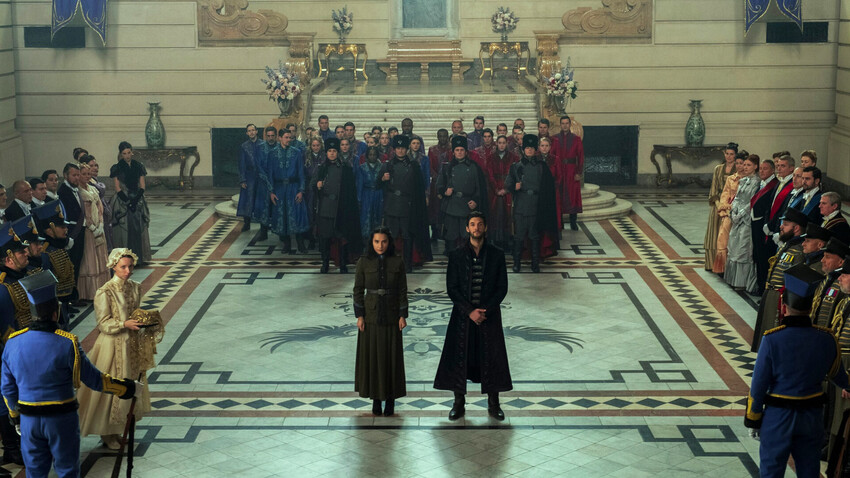
The tsar's court as depicted in 'Shadow and Bone'
Shadow and Bone, 2021, NetflixIn 2009, American writer Leigh Bardugo wrote a teen fantasy novel titled ‘Shadow and Bone’ (published in 2012) based on the aesthetics, culture and politics of the 19th century Russian Empire. She was able to create a classic for the genre story about a chosen hero in a wonderful world of wide-branching cranberries and things dear to the heart of the Russian people from different eras.
Bardugo defines the genre as tsarpunk – a fantasy with inspiration from early 19th century Russia. When asked by Breia Brissey of Entertainment Weekly, why she chose this particular setting, Bardugo explained, “I think there’s tremendous power in the images we associate with Russian culture and history, these extremes of beauty and brutality that lend themselves to fantasy. And, honestly, as much as I love broadswords and flagons of ale – and believe me, I do – I wanted to take readers somewhere a little different. Tsarist Russia gave me a different point of departure.”
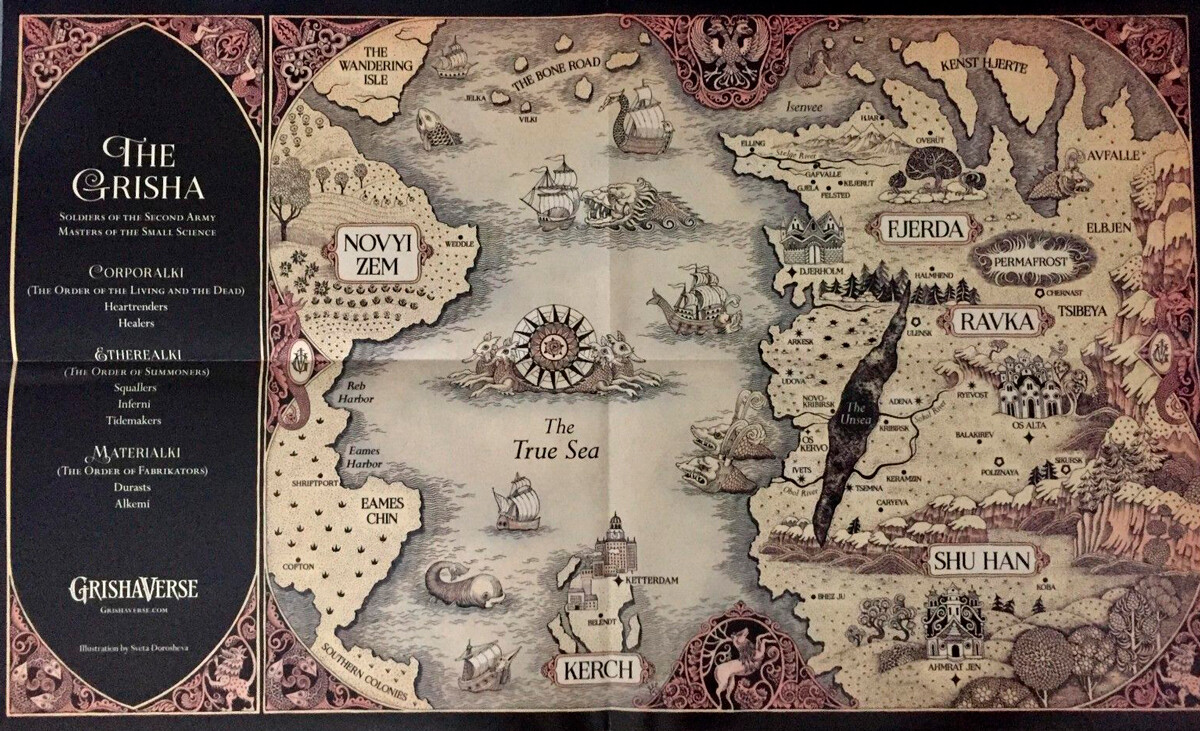
The map of the Grishaverse
Shadow and Bone, 2021, NetflixThe alternate “Russian Empire” of the series is called Ravka, inhabited by people with magic and ordinary residents – refuseniks (in the book, the writer calls them the term ‘otkazatsya’ for some reason, although, it is not a noun, but a verb). The country is in perennial conflict with its neighbor, Shukhan, which resembles China and Mongolia at the same time.
Many of the place names will seem both familiar and amusing to the Russian viewer – there is Kerch, Novokribirsk (sic!), Siberia (also it's strangely 'Tsibeya' in the show) and Novy Zem. However, they are in no way connected with their real prototypes, the author simply uses the words she likes to fill out the map.
Ravka’s language is inspired by Russian, but it is noticeable for a native speaker that Lee Bardugo is hardly familiar with it. The Russian translators of the novel and the creators of the voiceover did a lot of work to correct the confusion with the names of the characters and their gender. Often female characters have a masculine last name, while male characters, on the contrary, have a feminine last name.
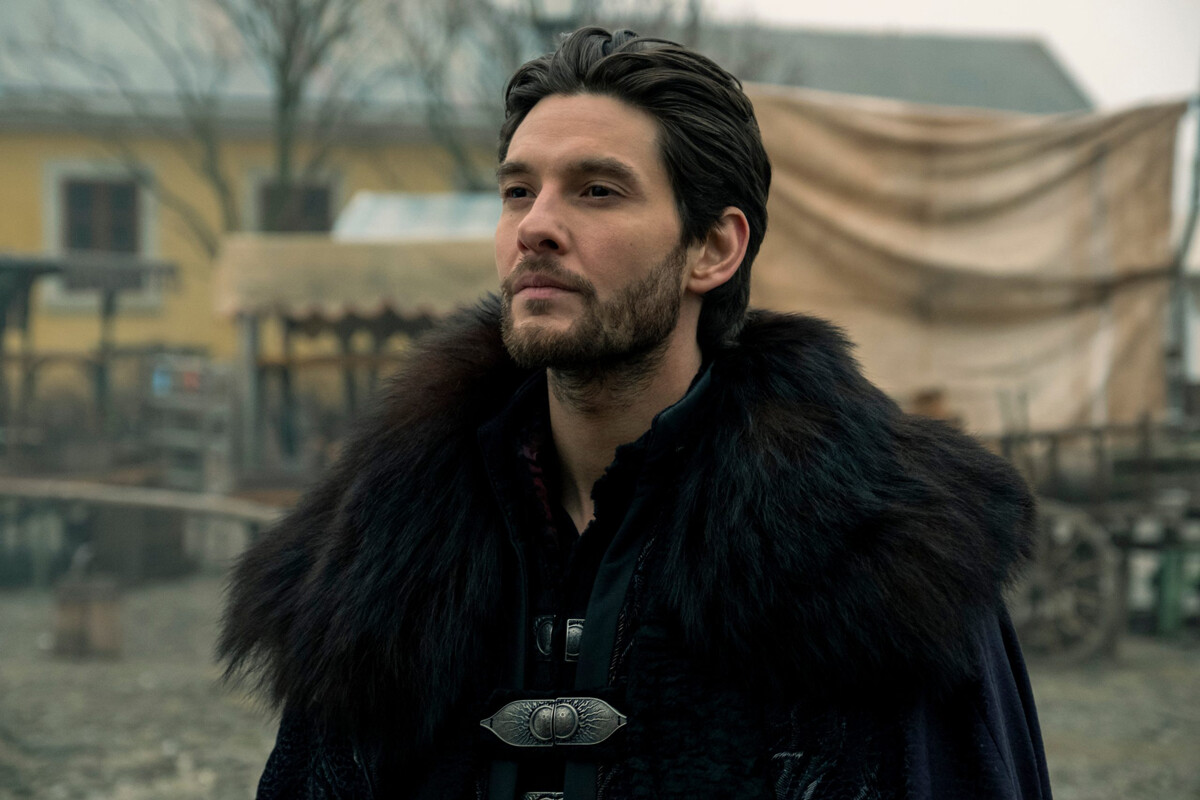
"Alexander Morozova" in furs
Shadow and Bone, 2021, NetflixFor example, the protagonist of the series in the original Alina Starkov (instead of Starkova), one of the first powerful magi named Ilya Morozova (instead of Morozov), a female friend of the main character – Zhenya Safin (instead of Safina) and similar silly nonsense. The series’ main villain, General Kirigan, somewhat loses his demonic flair for the Russian viewer when it turns out that his name is ‘Alexander Morozova’. Although, perhaps, after Baba Yaga played by Keanu Reeves, it is not so scary anymore.
READ MORE: How John Wick got Baba yaga terribly wrong
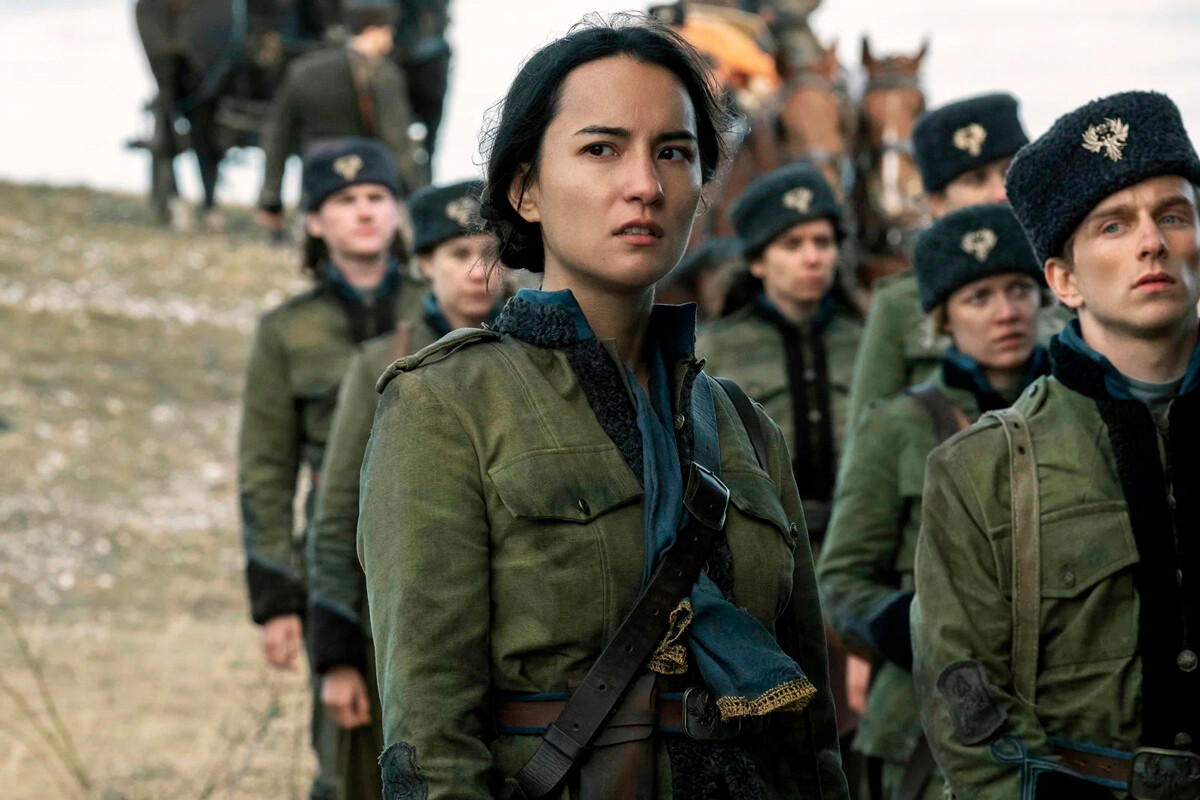
The uniform of the cartographer corps uses lamb hats and trench coats
Shadow and Bone, 2021, NetflixIn the series, we mostly see the main and secondary characters in Russian-style uniforms: above all, military uniforms and caftans.
When we meet the main character of the series, Alina, she serves as a cartographer in the First Army (consisting of people without magical powers). Her uniform is a combination of a lambswool cap, a headdress introduced by Emperor Alexander III for certain soldiers in the Russian Empire, and a World War I-era field jacket (trench coat). In reality, by the time the Russian army started wearing such jackets as uniforms, lamb hats were already out of use.
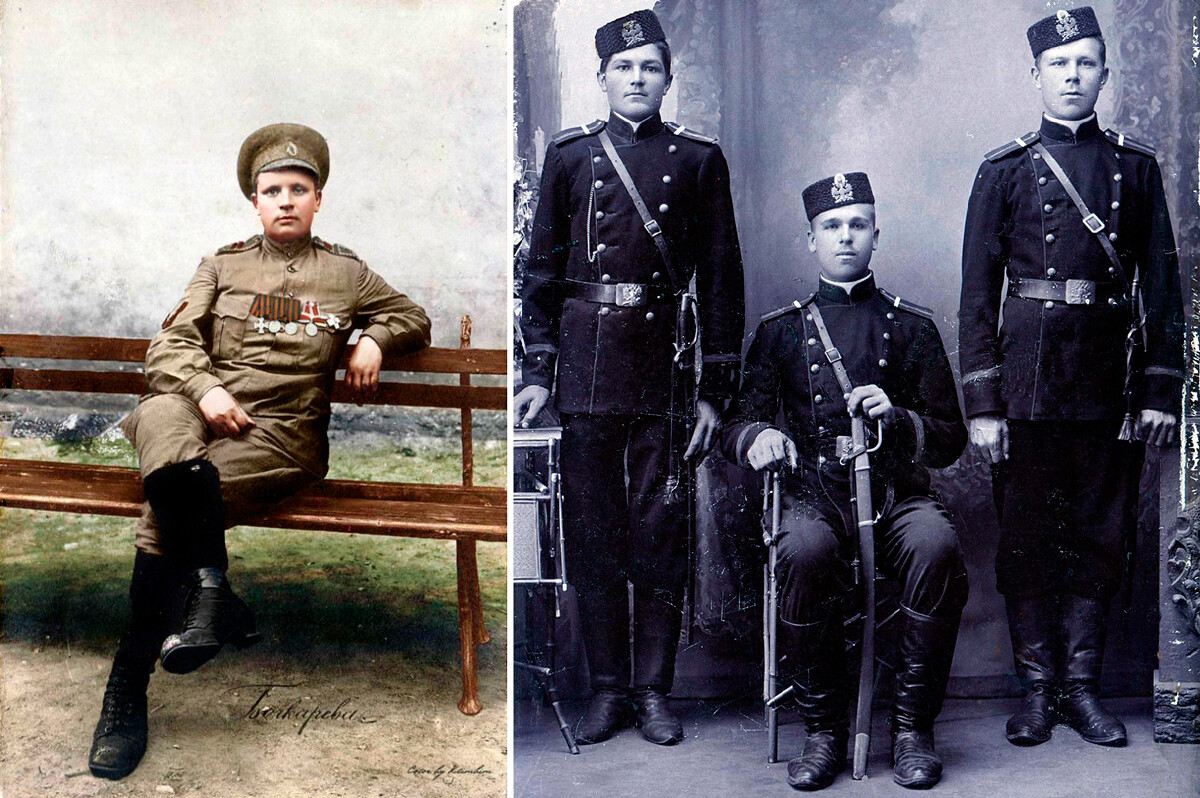
Maria Bochkareva (L) wearing a Russian Imperial Army trench coat // Russian soldiers wearing lamb hats
Public DomainMoreover, for a woman in the late 19th-early 20th century, it was almost impossible to get into the Russian army. One may simply recall the story of Maria Bochkaryova, who, at the beginning of World War I, wanted to join a reserve battalion, but was advised to become a nurse instead. Maria did not give up and appealed to the tsar, who sided with her. This was the only way Maria was able to get into the army and eventually received the George Cross and three medals for her bravery.
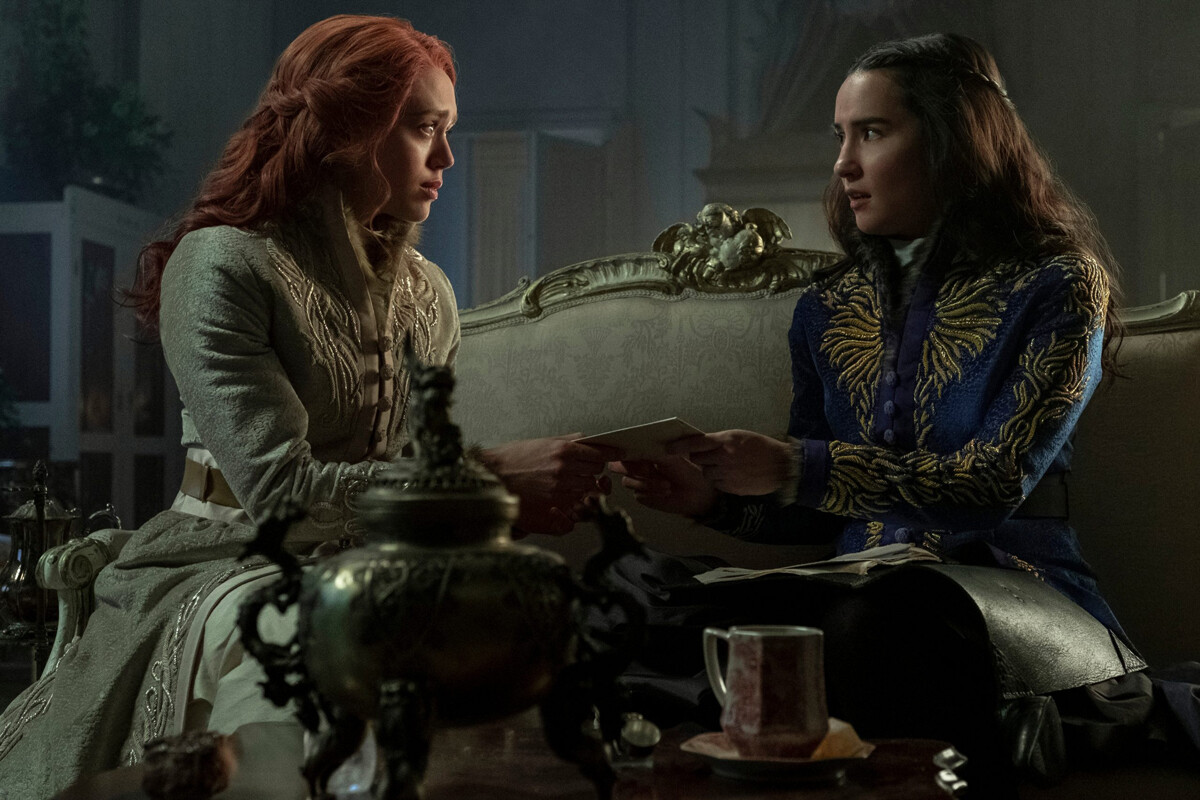
The fur lining of the clothes is visible on the fur edge of the collars
Shadow and Bone, 2021, NetflixThe second army, consisting of mages, dressed in kaftans of different colors. The color and embroidery on the caftan depended on what kind of magical powers the caftan’s owner possessed. In the Russian Empire, the kaftan was extremely popular for several centuries. Daily caftans were sewed out of cloth, as in the show, and for festive variants used silk and velvet, bright colors were popular. In the early 18th century, Peter the Great’s court got so carried away with decorating caftans with embroidery, galloons and trim, that Peter was forced to issue a restrictive decree, to not lead his subjects to additional expenses. The caftan was lined with sheepskin or fur for cold times, which can also be seen in the show.
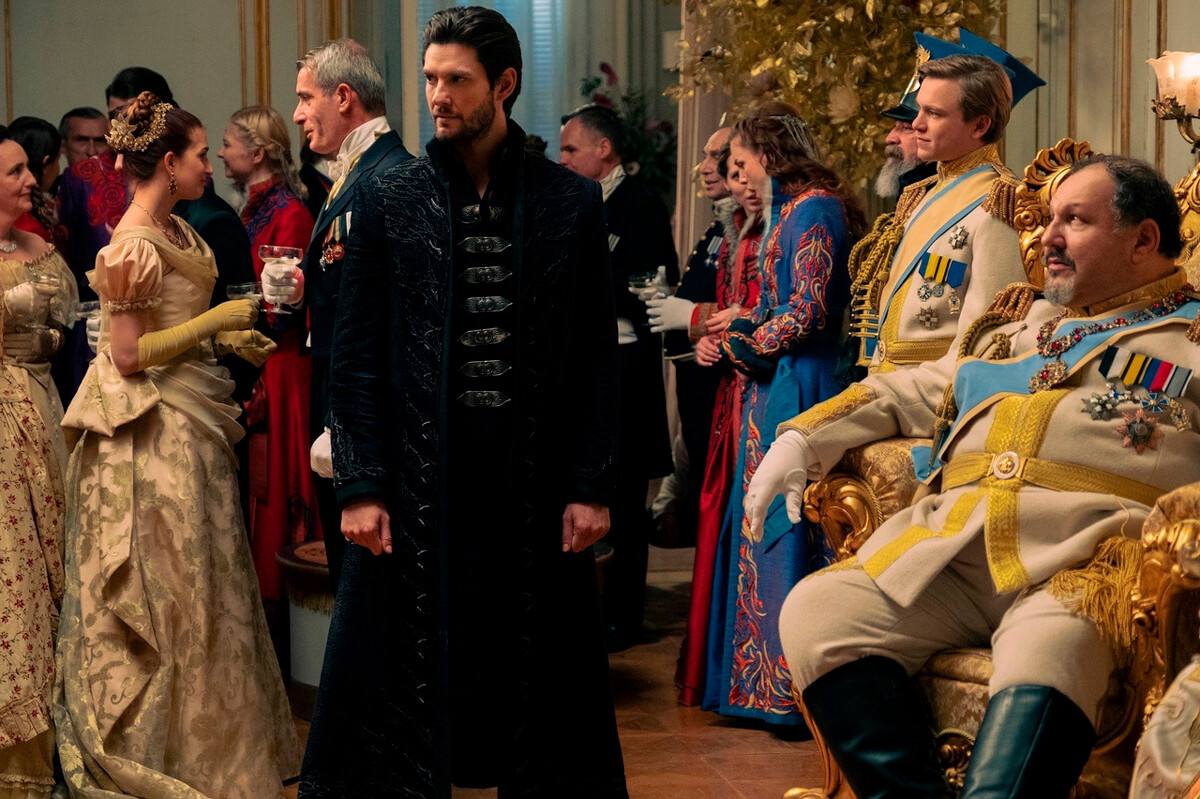
This is how the emperor's family looks like
Shadow and Bone, 2021, NetflixA royal family runs Ravka and, in the book series, the tsar’s name is Alexander III – however, in the show the tsar is renamed Peter, and often simply referred to as ‘Moi tsar.’ While the queen is referred to as 'moya tsarina’ – both of which is totally inaccurate historically. The Russian royals could only be addressed as "Your Imperial Majesty" by any of their subjects.
The actor, who plays the role of the tsar, resembles Alexander III (being true to the book), who was a big man and, according to memoirs of contemporaries, liked to appear in soldier’s boots with tucked pants in them.
One of the sons of the tsar is named Nicholas – which also would seem very fitting for the Russian audience, who remember that Nicholas II was the son of Alexander III.
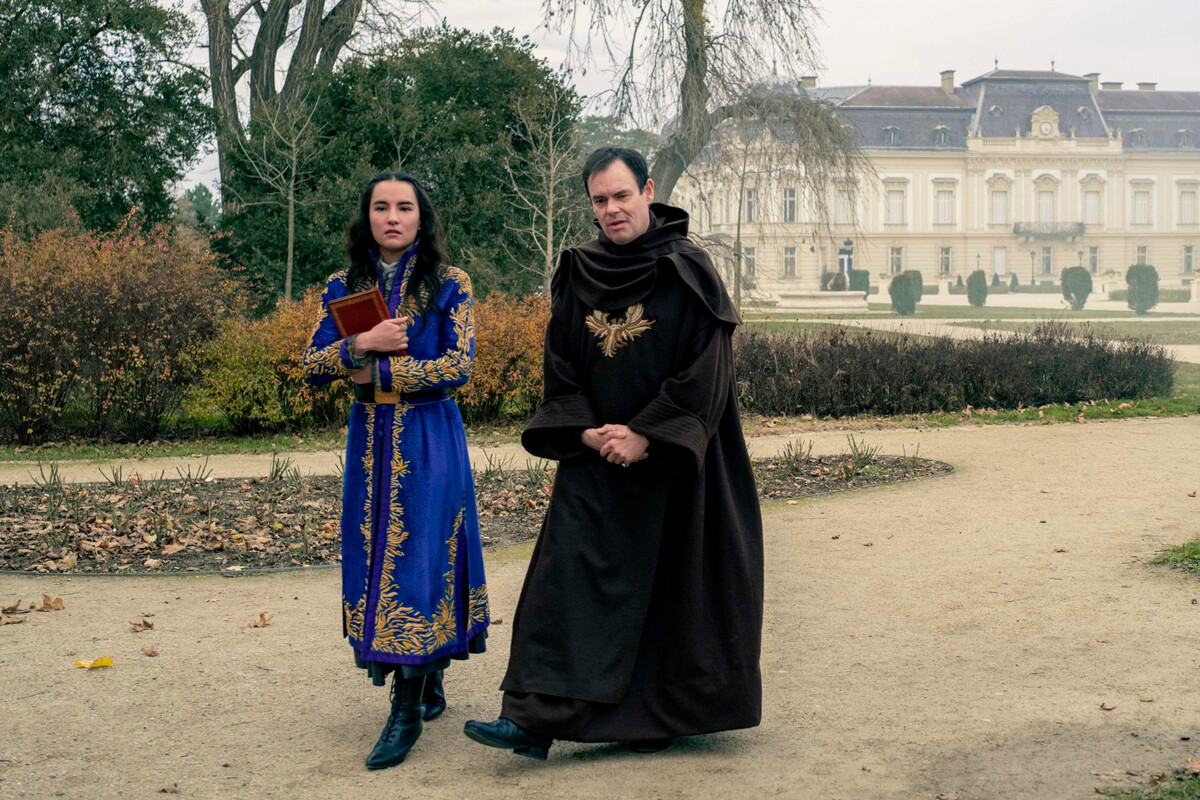
People with magical powers in the series are called ‘Grisha’. Their name is derived from Grigory Rasputin, the infamous friend of the family of the last Russian Emperor Nicholas II.
Rasputin gave the show not only his name, but also one of the most suspicious characters, a priest – also an adviser to the tsar named Aprat. His role in the first season is not entirely clear, although it is obvious that he has incomprehensible influence on the tsar and the court.
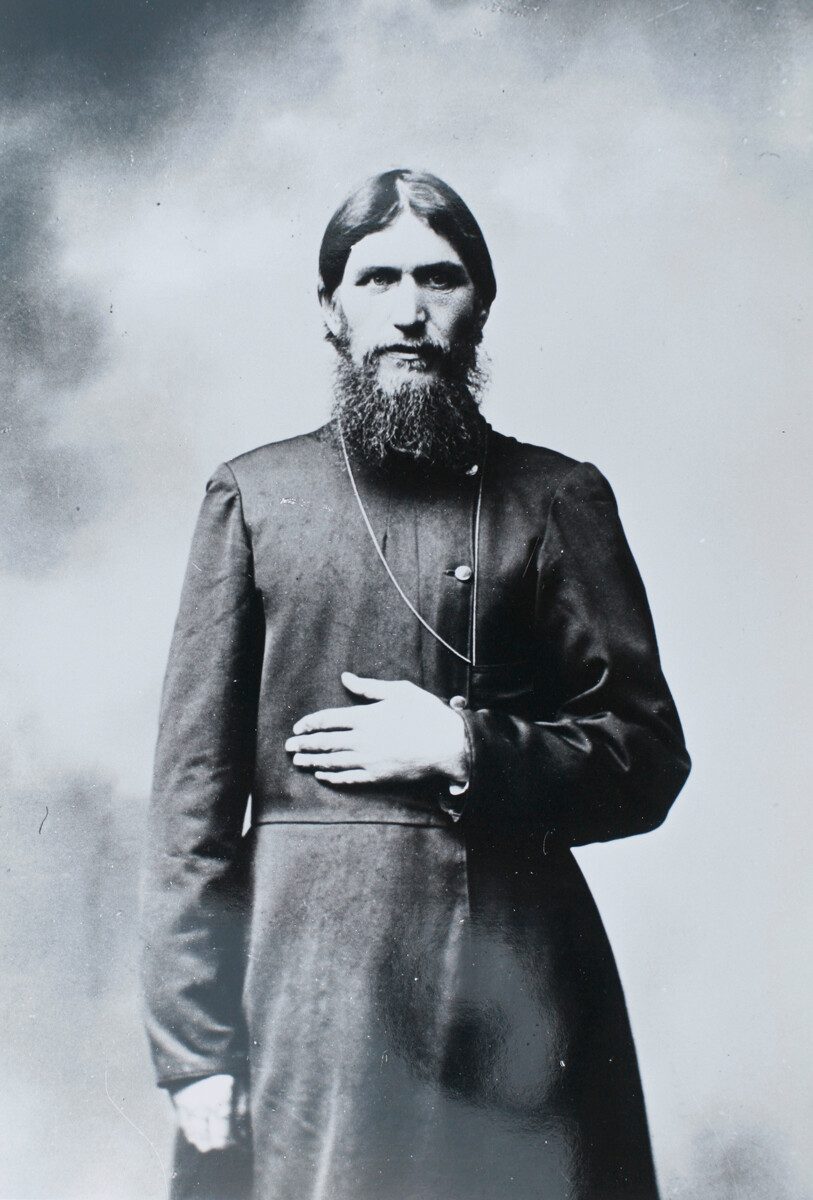
Grigory Rasputin
Public domainIn the second season, viewers will be able to see the development of this character and compare it with the tragic fate of Grigory Rasputin, who was murdered by conspirators.

Zhar-ptitsa ('Firebird') by Ivan Bilibin, 1899
Public DomainAs is the norm for teenage fantasy characters, Alina and her assistants will search for magical artifacts throughout the series, which, in Lee Bardugo’s world, are called enhancers. These creatures and their parts can enhance the magical abilities of certain mages.
Two of the three artifacts relate directly to the world of Russian fairy tales and lore. The first are the scales of a creature named Rusalye. Lee Bardugo depicts it as a sea dragon from children’s fairy tales, which lures beautiful women under the water. In Russian legends, the rusalka is a malicious spirit that appears as a woman with long hair in a white shirt in the field, by the water or in the woods. She can tickle a person to death or drown them in water. They don’t have fish scales or fish tails, so you can’t get any “artifact” from them.
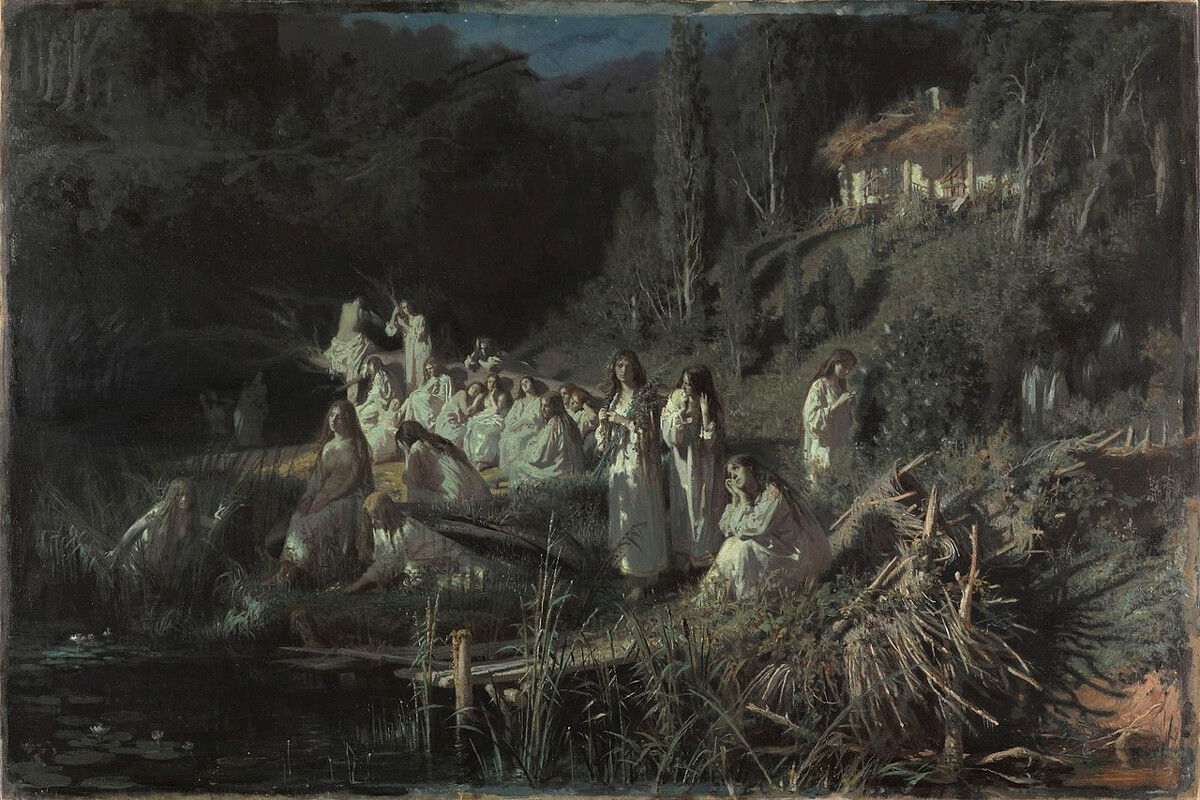
"Mermaids" ("Rusalki"), 1871, by Ivan Kramskoi
Tretyakov Gallery / Public domainThe second artifact to be found by Alina Starkova is the Firebird, a mythical bird with wings of fire believed to be the soul of the Ravkan Empire. In Slavic fairy tales, it is a bird with golden and silver wings, from which comes a bright glow. It is known to feed on golden apples that give youth, beauty and immortality, and its singing can heal the sick. Capturing the Firebird is a classic assignment for the protagonist of a Russian fairy tale.
In the second season, fans of the series will undoubtedly see other things related to the Russian Empire, which we will not write about, so as not to spoil it. Despite the author’s many amusing mistakes, ‘Shadow and Bone’ is a world filled with Slavic charm worth getting to know!
If using any of Russia Beyond's content, partly or in full, always provide an active hyperlink to the original material.
Subscribe
to our newsletter!
Get the week's best stories straight to your inbox